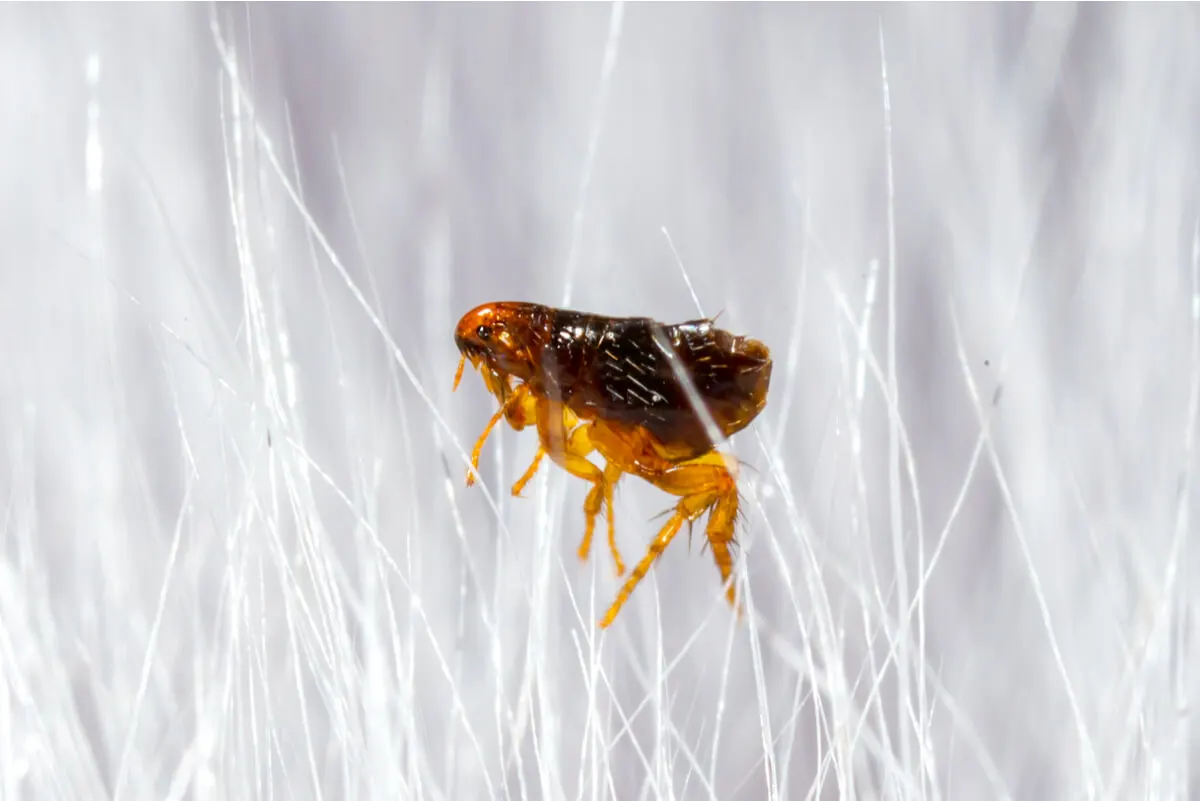What Do Flea Bites Look Like and How Long Do They Last?

Flea bites rarely have serious consequences, but they can give rise to health problems as a complication. Therefore, the presence of these annoying insects in the home shouldn’t be underestimated and it’s best to eradicate them.
Fleas are very small and quite resistant – they can last up to a year without eating. They feed on the blood of mammals and have a hard body that protects them from attempts to destroy them; they also reproduce copiously.
Flea bites
Flea bites can cause anything from a simple annoyance to bubonic plague, in some rare cases. The victim usually doesn’t even know what bit him or her or at what time, or even where.
It’s common for there to be redness in the area where the bite occurred. It’s also common for this to cause itching. However, symptoms can vary markedly from person to person.
Flea bites appear in the area of the ankles and legs, as these are the areas closest to the ground and are uncovered in the summer. They also frequently occur on the waist, breasts, groin, armpits, and the creases of elbows and knees.
There are almost always two to three bites, sometimes arranged in a straight line. There’s itching and some skin irritation that varies in intensity based on the person’s skin type. On the other hand, some have no symptoms at all.

Find out more here: Itchy Skin or Pruritus: Symptoms, Causes, and Recommendations
How to recognize flea bites?
Flea bites look like red bumps with a little dot in the center. They’re very similar to mosquito bites. However, the former are smaller lesions and are usually surrounded by a pink halo.
Flea bites are usually arranged in a row, as these insects don’t fly and their traditional way of attacking is to bite, take a few steps and bite again. The wound frequently bleeds and that’s why traces of blood are found on sheets or clothes.
Problems caused by flea bites
In most cases, flea bites cause only mild symptoms such as itching, and the irritation of the area. The lesion can become infected and, if this occurs, there’ll be pus, increased redness, and heat in the affected area.
In some people, this type of bite may trigger an allergic reaction. This ranges from more intense irritation in the area to difficulty breathing. Symptoms take 12 to 24 hours to appear.
In people with dermatitis, hives may form. The sting causes a lesion and this can also become a gateway for bacteria to enter the body. This is why it’s always a good idea to treat it.
The risk of contracting a serious disease from flea bites is very low. However, it can’t be ruled out. These animals can transmit pathologies such as typhus or bubonic plague.
Read more here: What Are Ectoparasites? All About Mites and Fleas
How long do they last and how to treat them?
Although the lesion caused by flea bites usually disappears on its own in one or two days, it’s always best to clean the area well to avoid complications. It’s best to wash the affected area with water and mild soap.
Itching can be reduced with ice or a cream containing antihistamines or corticosteroids. If there’s an allergic reaction, symptoms such as the following may appear:
- Swelling in other areas of the body
- Intense and long-lasting redness, with increased itching
- Dizziness, vomiting, and fainting
- Hives all over the body
- Blurred vision
- Difficulty breathing
These symptoms require medical assistance. Similarly, if discomfort persists for more than two days or unusual symptoms are experienced, such as fever or some other reaction, it’s best to consult a physician.

Eradicating fleas as a solution
To avoid the inconvenience and risks of flea bites, it’s best to eradicate fleas from the home. It’s very common for them to come from pets and, because of this, it’s advisable to treat them according to the veterinarian’s instructions.
Fleas tend to settle in carpets, so it’s necessary to vacuum them well and throw the garbage bag out of the house. It’s also advisable to wash bedding thoroughly and keep mattresses sanitized. In extreme cases, a pest control service can be hired.
All cited sources were thoroughly reviewed by our team to ensure their quality, reliability, currency, and validity. The bibliography of this article was considered reliable and of academic or scientific accuracy.
- Meregildo-Rodriguez, E. D., & Villegas-Chiroque, M. (2019). Peste septicémica rápidamente fatal secundaria a peste bubónica primaria inicialmente no diagnosticada: reporte de caso. Revista Peruana de Medicina Experimental y Salud Publica, 36, 515-519.
- Manzanares, J. L. (2018). Distribución espacial de egresos hospitalarios de casos por infección vírica por picadura de mosquito en México entre 2004 y 2014. Revista Panamericana de Salud Pública, 41, e30.
- Lozano, Ana Milena, et al. “Papular urticaria: A review of causal agents in Colombia.” Biomédica 36.4 (2016): 632-645.
- Verde Arribas, M. T., & Marteles Aragüés, D. (2009). ¿Por qué no conseguimos controlar el problema de las pulgas? Clínica veterinaria de pequeños animales, 29(2), 0126-128.
- Navarro, L., and Mª T. Verde Arribas. “La dermatitis alérgica a la picadura de pulga.” Clínica veterinaria de pequeños animales 22.4 (2002): 0311-317.
- Horrillo, Marina Sánchez, José Marín Sánchez Murillo, and Marta Vivas Martín. “Artrópodos y humanos. Generalidades sobre sus picaduras y las enfermedades que transmiten.” Badajoz Veterinaria 15 (2019): 22-31.
- García-Acosta, Jesús, and César Raúl Aguilar-García. “Tifus murino o endémico.” Medicina interna de México 31.4 (2015).
- Zaragozano, Jesús Fleta. “Rickettsiosis transmitidas por piojos, pulgas y ácaros.” Medicina integral: Medicina preventiva y asistencial en atención primaria de la salud 39.4 (2002): 147-152.
This text is provided for informational purposes only and does not replace consultation with a professional. If in doubt, consult your specialist.








